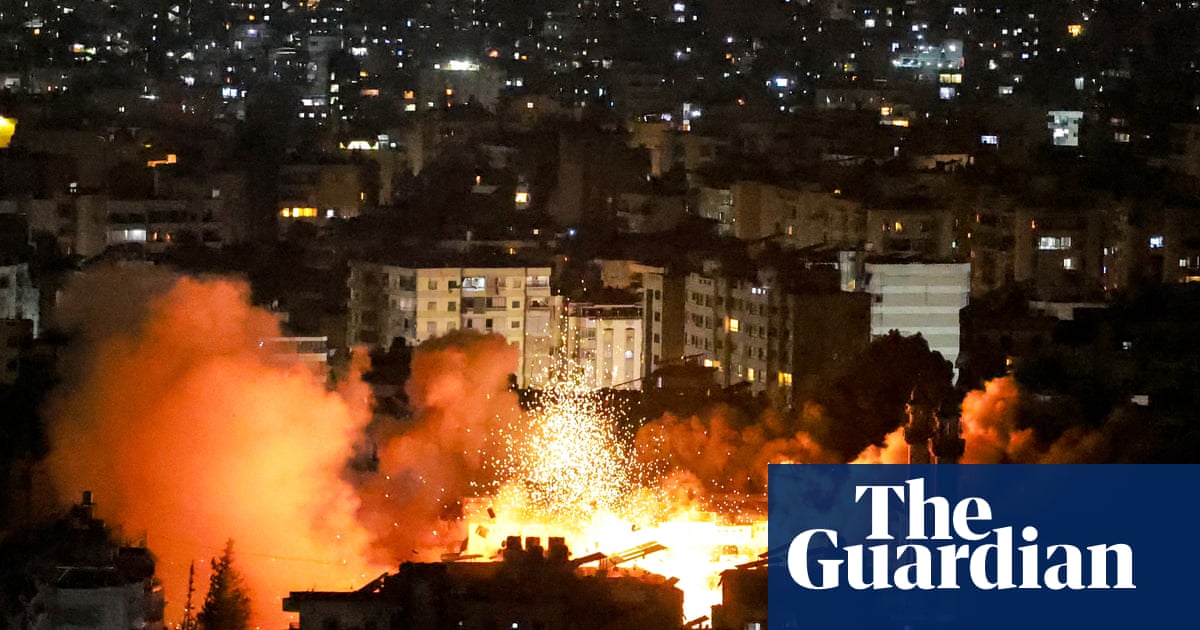Lebanon’s leaders accused Israel of a “flagrant” ceasefire violation by launching strikes againstHezbollahmilitants in southern Beirut on the eve of the Muslim holiday of Eid al-Adha.
At least three Israeli airstrikes have hit Beirut’s southern suburbs, after the military said it would target what it described as underground Hezbollah drone factories.
Plumes of smoke were seen billowing from the Lebanese capital, shortly after huge numbers of people had fled the area, clogging the roads with traffic.
“The IDF (military) is currently striking terror targets of the Hezbollah aerial unit,” the Israeli military said in a statement on Telegram.
In a statement, Lebanon’s president, Joseph Aoun, voiced “firm condemnation of the Israeli aggression” and “flagrant violation of an international accord … on the eve of a sacred religious festival”.
The prime minister, Nawaf Salam, also issued a statement condemning the strikes, which came despite a 27 November ceasefire that sought to end more than a year of hostilities with the Iran-backed Hezbollah.
Less than two hours earlier, its Arabic-language spokesperson, Avichay Adraee, had warned on social media that residents of the suburbs were “located near facilities belonging to the terrorist organisation Hezbollah” and should evacuate immediately.
In a separate statement, the military had said it would “soon carry out a strike on underground UAV (drone) production infrastructure sites that were deliberately established in the heart of (the) civilian population” in Beirut.
Israel and the Iranian-backed Hezbollah engaged in more than a year of hostilities that began with the outbreak of the Gaza war and culminated in an intense Israeli bombing campaign and ground incursion into southern Lebanon.
The November ceasefire sought to end the fighting – which left Hezbollah severely weakened – butIsrael has continued to regularly carry out strikes in Lebanon’s south.
Strikes targeting Beirut’s southern suburbs, considered a Hezbollah stronghold, have been rare, however.
“Following Hezbollah’s extensive use of UAVs as a central component of its terrorist attacks on the state of Israel, the terrorist organisation is operating to increase production of UAVs for the next war,” the military statement said, calling the activities “a blatant violation of the understandings between Israel and Lebanon”.
Under the truce, Hezbollah fighters were to withdraw north of the Litani river, about 18 miles (30km) from the border, and dismantle their military posts to the south.
Israel was to pull all its troops from Lebanon, but it has kept them in five positions it deems “strategic” along the frontier.
The Lebanese army has been deploying in the south and removing Hezbollah infrastructure there, with the prime minister, Nawaf Salam, saying on Thursday that it had dismantled “more than 500 military positions and arms depots” in the area.
